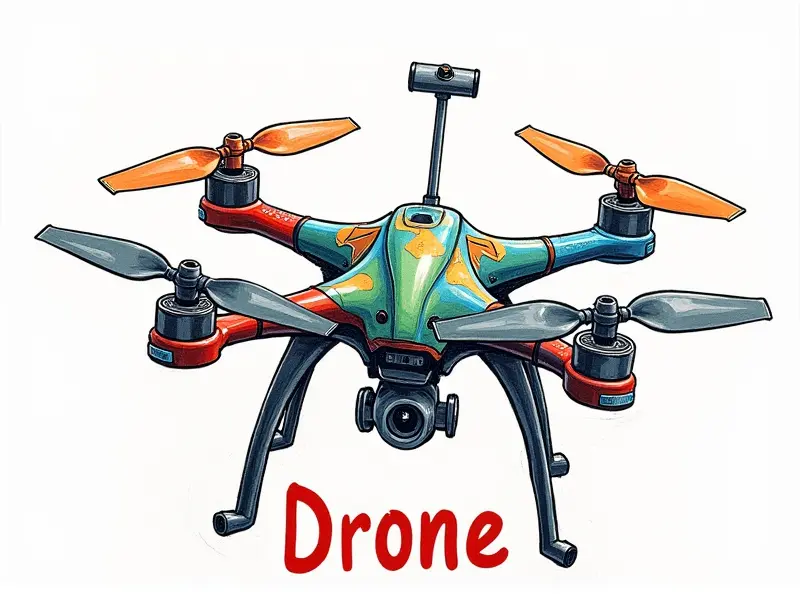How to set up a RC plane?

How to Set Up an RC Plane: A Comprehensive Guide for Beginners and Enthusiasts
Welcome to the exciting world of remote-controlled (RC) planes! Setting up your first RC plane can seem daunting, but with this detailed guide, you'll be soaring through the skies in no time. This article covers everything from quick tips to essential steps, ensuring a smooth and efficient setup process.
Quick Tips for RC Plane Setup
Before diving into the full setup process, here are some quick tips that can help streamline your experience:
- Read the Manual: Always start by thoroughly reading the manufacturer's manual. It contains specific instructions and safety guidelines.
- Check Compatibility: Ensure all components (transmitter, receiver, servos) are compatible with your RC plane model.
- Battery Management: Use high-quality batteries for optimal performance and longevity.
Beginner's Guide to RC Plane Setup
If you're new to RC planes, this section will provide a gentle introduction to the setup process. Follow these steps to get your plane ready for flight:
Step 1: Unboxing and Inventory Check
- Inspect Components: Make sure all parts are included and in good condition.
- Charge Batteries: Charge the battery packs before assembly to ensure they're ready for use.
Step 2: Assembly Basics
- Follow Instructions: Assemble the plane according to the manufacturer's instructions, paying close attention to alignment and balance.
- Install Servos: Properly install servos in their designated locations for smooth control response.
Step 3: Radio Setup
- Bind Transmitter: Bind your transmitter to the receiver using the correct protocol (DSM2, DSMX, etc.).
- Test Connection: Test the connection between the transmitter and receiver before flight.
Step 4: Final Checks
- Balance Check: Ensure your plane is properly balanced to avoid instability in flight.
- Safety Gear: Always wear protective gear such as goggles and helmets during testing flights.
Easy Steps to RC Plane Assembly
Assembly of an RC plane involves several key steps. Here’s a simplified breakdown:
Step 1: Frame Construction
- Attach Wings: Secure the wings using screws or clips, ensuring they are aligned properly.
- Fuselage Assembly: Assemble the fuselage by attaching the nose cone and tail sections.
Step 2: Motor Installation
- Select Motor: Choose a motor that matches your plane's specifications for power and efficiency.
- Mount Motor: Mount the motor securely to the frame, ensuring it is aligned with the propeller shaft.
Step 3: Control Surface Setup
- Attach Servos: Install servos for ailerons, elevators, rudder, and flaps if applicable.
- Connect Electronics: Connect the receiver to the ESC (Electronic Speed Controller) and servos.
Simplified RC Plane Build Process
The build process can be simplified by breaking it down into manageable tasks. Here’s a streamlined approach:
Step 1: Gather Tools and Parts
- Essential Tools: Screwdrivers, pliers, soldering iron, etc.
- Parts Checklist: Ensure you have all necessary components before starting assembly.
Step 2: Frame Assembly
- Wings and Fuselage: Assemble the main structure of your plane, focusing on alignment and stability.
- Attach Tail Section: Securely attach the tail section to complete the frame.
Step 3: Electrical Installation
- Install Receiver: Place the receiver in a secure location within the plane.
- Connect Servos and ESC: Connect all electronic components to ensure proper communication between transmitter and plane.
Ultimate RC Plane Quick Start
To get your RC plane up and running quickly, follow these essential steps:
Step 1: Initial Setup
- Bind Transmitter: Bind the transmitter to the receiver.
- Charge Batteries: Charge all battery packs before assembly.
Step 2: Assembly and Testing
- Assemble Frame: Construct the frame according to manufacturer instructions.
- Test Control Surfaces: Test each control surface individually for proper operation.
Step 3: Final Adjustments
- Balancing: Balance your plane to ensure stability during flight.
- Safety Checks: Conduct a final safety check before taking off.
Efficient RC Plane Initial Setup
The initial setup of an RC plane is crucial for optimal performance. Here’s how to do it efficiently:
Step 1: Component Installation
- Install Receiver: Place the receiver in a central location within the fuselage.
- Mount Servos: Mount servos securely and connect them to the receiver.
Step 2: Motor and Propeller Setup
- Select Motor: Choose a motor that matches your plane's specifications.
- Attach Propeller: Securely attach the propeller to the motor shaft.
Step 3: Final Calibration
- Calibrate Controls: Calibrate control surfaces for optimal response.
- Battery Check: Ensure all batteries are fully charged and properly installed.
Fast Track Your RC Plane Build
To speed up the build process, follow these steps:
Step 1: Gather All Parts
- Inventory Check: Ensure you have all necessary parts before starting.
- Charge Batteries: Charge all batteries to full capacity.
Step 2: Frame Assembly
- Attach Wings: Securely attach the wings to the fuselage.
- Fuselage Construction: Assemble the main body of your plane.
Step 3: Electrical Installation
- Install Receiver: Place the receiver in a secure location within the fuselage.
- Connect Electronics: Connect all electronic components to ensure proper communication between transmitter and plane.
RC Plane Build Tips for Beginners
Building an RC plane can be challenging, but these tips will help beginners get started:
- Start with a Kit: Begin with a pre-assembled kit to understand the build process.
- Follow Instructions Carefully: Read and follow all instructions carefully during assembly.
- Practice Calibration: Practice calibrating control surfaces before flying your plane.
Conclusion
Building an RC plane is a rewarding experience that requires patience, attention to detail, and proper planning. By following these steps and tips, you can efficiently build and fly your own RC plane with confidence.
If you have any questions or need further assistance, feel free to reach out for guidance. Happy building!

